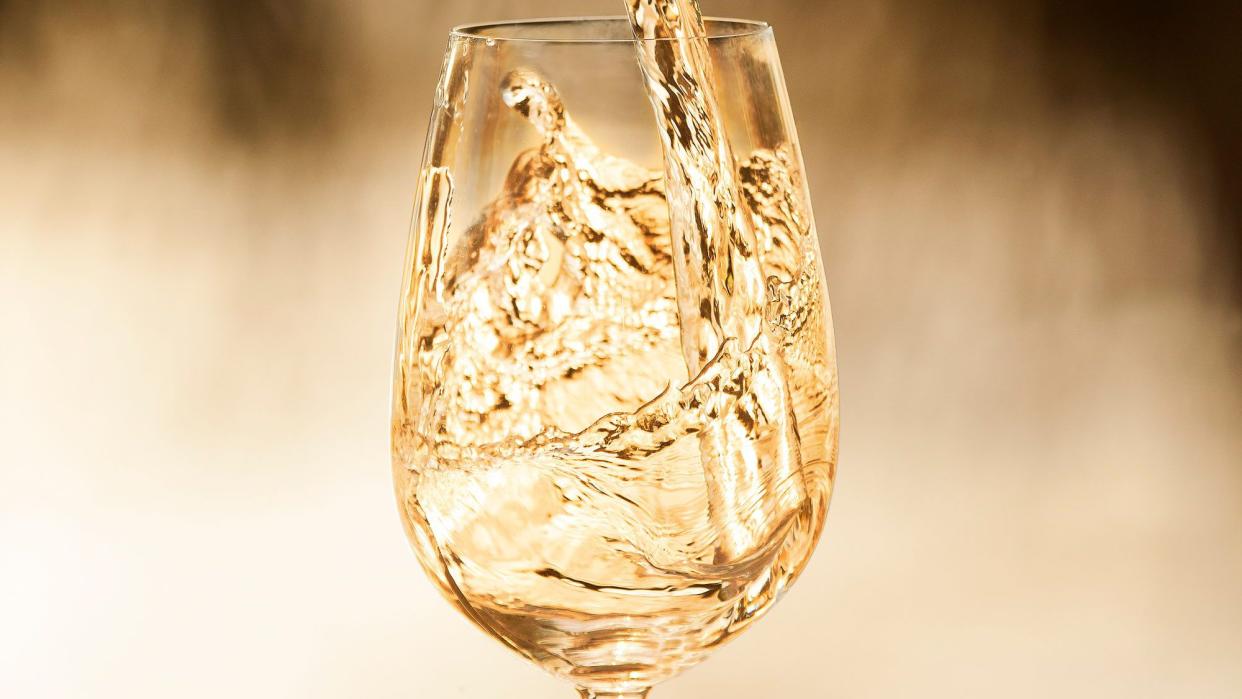Marsanne — A Guide to the Basics

Michael Dunning / Getty Images
As the popularity of white wine from the Rhône Valley in France continues to grow, more consumers are becoming familiar with the Marsanne grape variety –– even if they don't know it by name. Its arguably most prestigious use is in the age-worthy white wines of Hermitage in the Northern Rhône, but Marsanne plays a key role in other wines from the region, as well. White Côtes du Rhône, for example, often features Marsanne alongside blending partners like Roussanne andViognier. Meanwhile, Californian and Australian Rhône-variety pioneers have proved that it can have very successful homes outside of France. Yet for all of this geographic diversity, it's only fairly recently that a broader swath of consumers has begun to more fully appreciate all that Marsanne is capable of doing. Its time to shine, it seems, may be right now.
What is Marsanne Wine?
Marsanne is a white wine produced from the grape variety of the same name. It is one of the most well-known and highly regarded white grape varieties in the Rhône Valley, where it arguably reaches its peak in Hermitage. There, it is typically blended with Roussanne to produce a wine that, while made in even smaller quantities than its red counterpart (red Hermitage is based entirely on Syrah), enjoys a passionate following among its most ardent collectors. Marsanne wine is not limited to the Rhône Valley, or even to Southern France in general; most notably, it also thrives in California and Australia.
Where Does Marsanne Wine Come From?
Marsanne is indigenous to the Northern Rhône Valley of France, where it achieves greatness in the white wines of Hermitage alongside its frequent blending partner, Roussanne. Drinkers should also look for it in the white wines of Saint-Joseph, Crozes-Hermitage, and other Rhône appellations. It is frequently a key component in the blends of white Côtes du Rhône, where it is often used to lend further depth and complexity to Viognier and Grenache Blanc. It can also be found in other parts of Southern France, like the Languedoc-Roussillon, and in the Savoie.
Marsanne also does very well in California, particularly the Central Coast and most famously in Paso Robles. And in Australia, producers in McLaren Vale and the Yarra Valley are leading the way in the world of Australian Marsanne.
Why Should You Drink Marsanne Wine?
Historically, there has been an unfortunate bifurcation in the world of white wine consumption in the United States, with consumers often dividing themselves up into either fans of rich, buttery Chardonnay or crisp, vibrant Sauvignon Blanc. In doing so, they ignore the vast range of wines that occupy the space between those two, or the varieties that would appeal to members of either of those two camps in ways that might surprise them –– like Marsanne. Tending to boast the kind of deep, occasionally creamy textures that fans of certain styles of Chardonnay often love, yet its aroma and flavor profiles are quite different from Chard. In certain blends, given the character of many of the other Rhône-associated varieties — Roussanne, Grenache Blanc, and Viognier being among the most well-known — it can easily appeal to fans of more aromatic grapes like Albariño and Sauvignon Blanc.
Marsanne and blends that make use of it are also versatile at the table: They tend to have the ability to work well alongside aromatically spiced dishes as well as creamier ones, from Thai basil chicken to classic French blanquette de veau or even a simple steamed lobster.
What Does Marsanne Taste Like?
Marsanne generally boasts notes of stone fruit and beeswax. As it ages, drinkers might be able to taste almonds and a nod in the direction of honey. Waxiness can also often be detected alongside a seam of minerality. Marsanne's acidity can vary, depending on its level of ripeness at harvest (grapes picked earlier tend to have higher levels of acidity), though acid tends to be on the lower side and there is often a sense of weight that grows more pronounced with maturity.
Five Great Marsanne Wines
There are countless great Marsanne wines on the market today. These five producers, listed alphabetically, are a perfect way to start exploring all that Marsanne has to offer.
D'Arenberg
One of the most prolific producers in Australia's McLaren Vale, D'Arenberg's "The Hermit Crab" brings together Viognier and Marsanne to result in a wine that finds a pinpoint balance between effusive perfume and tropical fruit.
Domaine Clape Saint-Peray Cru des Côtes du Rhône
In 2019, this 80% Marsanne and 20% Roussanne blend sang with beeswax, lanolin, green almonds, acacia, and mineral, as well as caraway seeds, white licorice, and Seckel pears.
Jean-Louis Chave
From one of the masters of the Rhône, the Chave Hermitage Blanc earns its place in collections and restaurant cellars vintage after vintage. It's typically a blend of Marsanne and Roussanne, and has the ability to age brilliantly for decades, growing more savory and nuanced as it does.
Mas de Bressades
The "Cuvée Tradition," from the Costières de Nîmes appellation in the Southern Rhône, brings together a classic blend of Grenache Blanc, Roussanne, Marsanne, and Viognier to create a wine that, in the 2019 vintage, is vibrant and mineral with a subtle lemon blossom lift to the pear, spice, and white licorice notes.
Tablas Creek
The Côtes de Tablas Blanc is a classic Paso Robles Rhône-style white. It blends Viognier, Grenache Blanc, Marsanne, and Roussanne in a wine whose perfume is offset by vivid acidity. Tablas Creek is one of the pioneers in producing stellar Rhône-style wines in California. Randall Grahm, who founded Bonny Doon, is another leader in the region.

